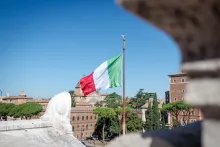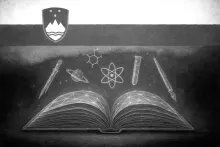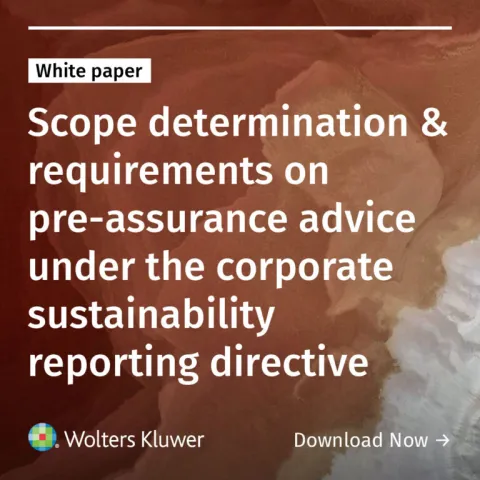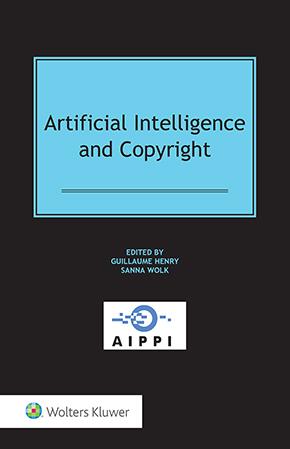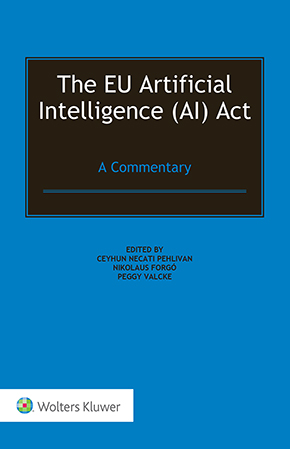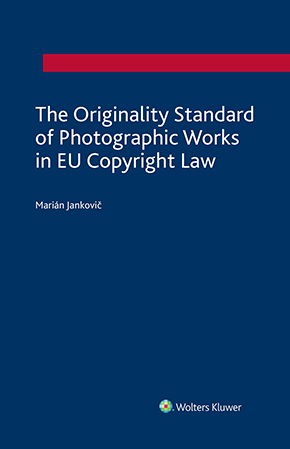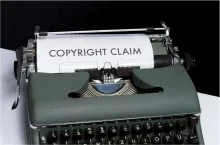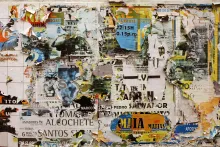Damien Hirst’s 200-year plan: copyright’s uneasy role in the arts
October 21, 2025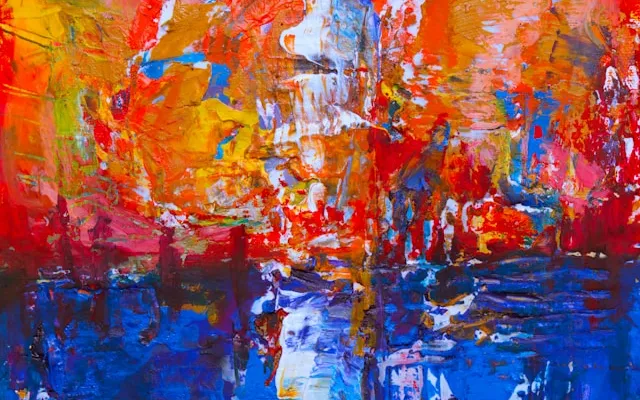
Damien Hirst, one of the world’s foremost artists, recently revealed plans to produce works for 200 years after his death, each to be deemed authentically his. He plans to secure this artistic legacy by writing a set of instructions for a different artwork into each of 200 notebooks, with one of them to be opened each year following his death. Collectors will be able to buy these notebooks alongside the right to make the artwork described therein, upon which they will be able to receive a certificate signed by the artist’s heirs declaring that it is an authentic Damien Hirst.
Authenticity certificates have become ordinary accompaniments to artworks, helping collectors, galleries, and historians understand works and avoid complex efforts to verify their provenance. Nevertheless, guarantees of authenticity exist merely as a custom in art – they are neither prescribed by law, nor do they have any unique legal significance in their own right.
Legally speaking, it is often the law of copyright which is seen as best facilitating and supporting the creative arts; however, copyright law sits uneasily alongside projects like this, complicating (and perhaps even frustrating) attempts at artistic expression and boundary-pushing by creating a complex legal labyrinth for artists to navigate.
Under the copyright law of the UK (Hirst’s native home) and assuming that at least some of Hirst’s 200 posthumous works would ordinarily be original artistic works protected by copyright, three issues arise that highlight copyright law’s tension with fine art in this case: authorship, copying, and moral rights.
a) Authorship
Following s.9(1) Copyright, Designs and Patents Act 1988 (“CDPA 1988”), the author of a work is the person who creates it. In any ordinary artistic instance, this would presumably be the artist, since they create the work. What, however, is the case when an artist writes down instructions for their work and then leaves another (presumably some future studio assistant) to physically bring about the work? Hirst’s works are often physically simplistic, so it might be that his instructions are too – after all, it is entirely possible to build a replica Hirst from the line ‘hang a shark in a clear, white-framed tank of formaldehyde’. Hirst has undoubtedly outlined an idea, but in copyright it is its expression, not the mere idea, that is central.
A more conceivable scenario is one in which the instructions are more complex, but in which a studio assistant still makes decisions as to certain elements of the work’s execution. In this case, it is surely possible that they could add the right kinds of collaboration, authorship, contribution, and non-distinctness of contribution that the court in Kogan v Martin deemed enough to make them or the studio in which they are employed a joint author of the work under s.10 CDPA 1988. This would frustrate Hirst’s attempts at creating a posthumous legacy, since any licence of the work requires permission of both copyright owners (as per s.173(2)). The work could not be displayed in a gallery, for example, without this dual permission, naturally complicating the smooth running of Hirst’s project. Looking beyond copyright’s traditional boundaries briefly, this might also complicate royalties accruing under the Artist’s Resale Right. Whatever the jurisprudential rationale for these rules, in this instance they certainly pose a challenge to any artist trying to create a scheme like Hirst’s.
Just as copyright provides sources of creative frustration in executing this project, it might appear that it can also provide a solution. After all, s.91 CDPA 1988 does permit the assignment of future copyright to another, meaning that a studio could agree to assign the copyright solely to Hirst. The issue with this, however, is that s.91 requires either a signature from the assignee (impossible after death) or on the assignee’s behalf, where it is not clear whether a signature can be made on the behalf of a deceased person. To execute this artistic project therefore means running into extreme legal uncertainty and complexity in order to ensure the project’s proper functioning, which seems anathema to the artistic support copyright supposedly espouses.
b) Copying
Unsurprisingly, copying a work constitutes an infringement of copyright, and s.17(3) CDPA 1988 states that this includes the making of a three-dimensional version of a two-dimensional work. If one is to assume that Hirst’s notebooks contain diagrams in which copyright subsists, then the studio assistant may well find themselves committing copyright infringement. As mentioned above, Hirst plans to sell the notebooks alongside the right to make their content, but this must therefore be drafted in a way that allows the purchaser to make sub-licences and allow studios to make the work. Again, therefore, the law of copyright has provided a hurdle to the meaningful execution of this artistic project.
The question remains whether a licence of this form will be required for each notebook sold. In the UK, copyright expires 70 years after the year of the author’s death. If a collector chooses to buy any of Notebooks 1-70 and delay its opening, or buys any of Notebooks 71-200, then a buyer has simplified their entire purchase by allowing them to make the work without any need for a licence. The time limit inherent in copyright law, whatever its justifications and normative logic, again provides a source of frustration for an artist in Hirst’s position. Aside from conceptually undermining the posthumous plan, this issue also has an impact on the art market, likely driving down the sale prices of the relevant works by making them easy to copy.
Given this, it seems sensible to assume that what Hirst is selling alongside the notebooks is not just a copyright licence (in relation to the first 70 years), but rather a contractual agreement binding the buyer to open the notebook and make the work according to a close set of instructions. Any collector purchasing such a work, therefore, would be wise to keep hold of the contract alongside the notebook. This results in an awkward arrangement where value is conditional not on the artwork, but the broader package of paperwork. Like so many things, the solution for this entire 200-year project lies in a contractual promise, rather than a provision of copyright law – but this leaves Hirst’s novel artistic project in a messy and overly complex situation with attached legal costs unbearable for most artists.
c) Moral Rights
One of the moral rights available as part of UK law is the right to object to false attribution as the author of a work that is not your own, a right which lasts only 20 years after the year of the author’s death (s.86 CDPA 1988). Imagine a world in which, after Hirst’s passing, his ‘dot paintings’ crash in value while his formaldehyde sculptures skyrocket. A dishonest collector opening their notebook in Year 21 to find instructions for a ‘dot painting’ might feel compelled to tell a studio to make a formaldehyde sculpture instead, and by then the Hirst estate has lost the power to enforce their moral right and object to Hirst’s false attribution as its author. That being said, they would likely still have a contractual remedy, and a collector being exposed for this dishonesty would surely face a degree of ostracization in the art market.
Another of the moral rights – the right to attribution – lasts 70 years after the year of the author’s death (s.86 CDPA 1988). Imagine a world in which not just some of Hirst’s works, but all of them plummet in value, and a dishonest collector opens Notebook 71 and decides to pass off the resulting work as something created by, say, Tracey Emin. This, again, defeats the point of Hirst’s project for a posthumous legacy. Again, however, this is what the contractual promise, authenticity certificate, and threat of being labelled an untrustworthy art dealer hopes to avoid. The contract concept of misrepresentation may also play a part. While there certainly exist solutions to this frustrating point of copyright law, it is interesting to note that they lie with the forces of contract and the trends of the market.
This point on the right to attribution is notwithstanding the fact that under ss.77-78 CDPA 1988, to benefit from this right it must first be asserted in writing; the law is silent as to whether this can be done in advance, let alone in advance of death.
Conclusion
Damien Hirst’s 200-year project for posthumous art thus highlights the tension between an area of law often heralded as protecting the creative arts, and yet also greatly complicating the actual making of an artistic project. After all, whatever one’s views on Hirst’s artwork, imposing such complex legal challenges on what is a simple attempt to push artistic boundaries must sit uneasily with stronger supporters of leaving artists unconstrained to work how they wish. Nevertheless, for a man whose works include a chamber for electrocuting flies and a cow and her calf sawed into two, and who has been accused of copyright infringement multiple times, it feels safe to assume that keeping his lawyers busy is not a new habit for Damien Hirst.
You may also like

